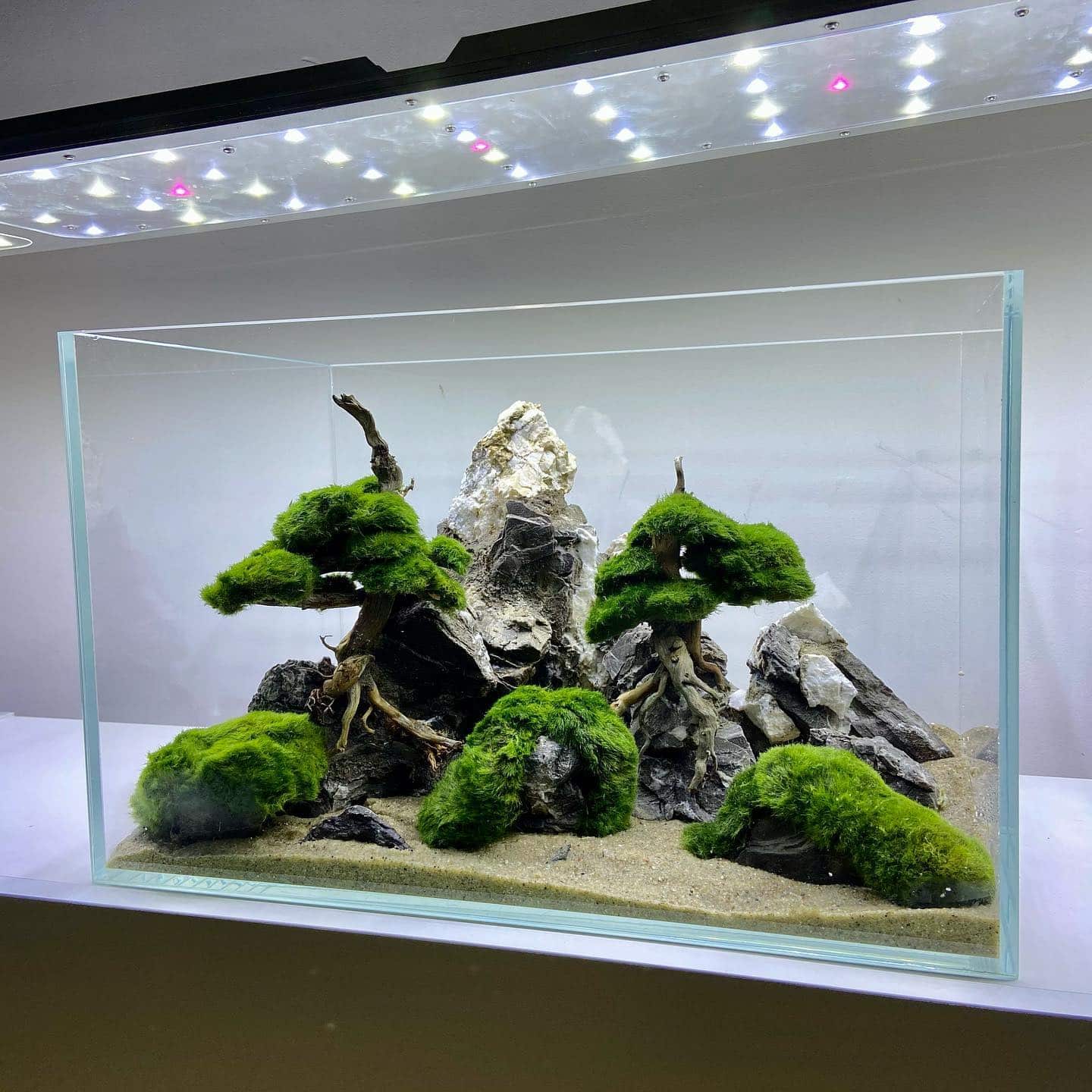Would you believe it if someone told you the Aquarium Bonsai is not actually a Bonsai tree but a manipulation with Moss patches? Well, yes, it’s a tactical artistry to mimic nature.
Besides the visual aesthetic an Aquarium Bonsai Moss has, you need to provide proper care to keep them alive.
So, follow along to learn more about the Bonsai Moss and how to create an aquascaping adventure.
Table of Contents Show
Can A Bonsai Tree Live In An Aquarium?
Bonsai is a live plant that is trained and groomed to grow as a miniature. So, it is not possible to grow a live green Bonsai in the water as the leaves and live wood starts to decay.
And if you are wondering about the green leaves-like thing the Aquarium Bonsai has, they are actually patches of Moss strategically placed to look like a live tree.

Meanwhile, you can collect driftwood from natural water bodies like rivers, lakes, or oceans.
Or, you always have the option to sculpt and shape them to resemble Bonsai Trees.
What Moss To Use For Aquarium Bonsai?
Moss prefers shady areas, and they need moisture to thrive.
Despite being best suited in damp or swampy conditions, not every Moss can successfully grow in an Aquarium, completely submerged.
Some Moss, like Java Moss, can attach themselves directly to the surface of the driftwood by sending out tiny rhizoids.
While others, like Christmas Moss, cannot attach to the driftwood. So, you need to provide the substrate, like a fishing line or thread.
Apart from the nature of the Moss, you should also consider the requirement of your Aquarium and need to select accordingly.
5+ Popular Moss Varieties For Aquarium
- Java Moss ( Taxiphyllum barberi): They have delicate feathery fronds that create a lush, green carpet-like appearance. Also, they form a dense clump that you can use and manipulate to fit in different Aquarium layouts.
- Christmas Moss (Vesicularia montagnei): Famous for its branching growth pattern that resembles a tiny Christmas tree. They help create a visually appealing and textured appearance in the Aquarium.
- Flame Moss (Taxiphyllum sp. ‘Flame’): The fronds of this Moss curve upwards, making it look like a flame. The vibrant green coloration and intricate branching contribute to the aesthetics of an Aquarium. Attach the Moss to the required surface using a thin fishing mesh to get the best out of the Flame Moss.
- Taiwan Moss (Taxiphyllum alternasn): Taiwan Moss is among the easiest to care for Aquarium Bonsai Moss. Either a beginner or an experienced aquascaper, you’ll not have a problem handling its delicate green fronds. The only condition is moderate lighting.
- Weeping Moss (Vesicularia ferriei): Unlike the rest of the list, Weeping Moss has a hanging or cascading growth habit. This creates a captivating curtain-like effect when attached to driftwood. Moreover, you need to provide Moss with moderate to high lighting.
- Subwassertang (Lomariopsis spp): While not a true Moss, Subwassertang’s dense, bushy growth makes it a popular choice for adding character and texture to your Aquarium. Meanwhile, the branching green strands give depth and complexity to your Bonsai Moss landscape.
How Do You Keep Bonsai Moss Alive in Aquarium?
The whole concept of a Bonsai Moss Aquarium is to combine the art of Bonsai, creating a fusion of miniature landscape with the natural water elements.
It allows you to express your creativity and artistic vision. But your work as a gardener or an aquascaper doesn’t end here, as the bigger challenge is to keep them alive.
So, here are a few tried and tested tips to keep the Aquarium Bonsai Moss alive.
- Use Aquarium-specific LED lights or fluorescent bulbs to stimulate natural daylight conditions.
- Most Moss varieties prefer slightly acidic to neutral pH (6.0-7.5), so try maintaining the consistent water parameter. For that, change the water regularly to prevent toxin buildup.
- Ensure proper water circulation to avoid stagnant areas where debris can accumulate on the Moss. Som installing an Aquarium filter is a must.
- Regularly trim and prune your Bonsai driftwood and Moss to maintain the visual aesthetics of your Aquarium. Make sure to remove the dead or decaying plants as quickly as possible, as they favor algae growth.
- Moreover, Bonsai Moss is susceptible to algae growth. To prevent this, you must regularly clean the Moss with a soft brush or sponge.
- Schedule cleaning seasons to prevent excessive buildup.
From Editorial Team
Consider Adding Fish In The Aquarium!
Fishes might add complexity to your Aquarium setup and drive attention from the Bonsai.
But including some can contribute to the overall miniature ecosystem as they produce nitrogen-rich waste.
Further, this nitrogen-rich water nourishes the green in your aquascape.


